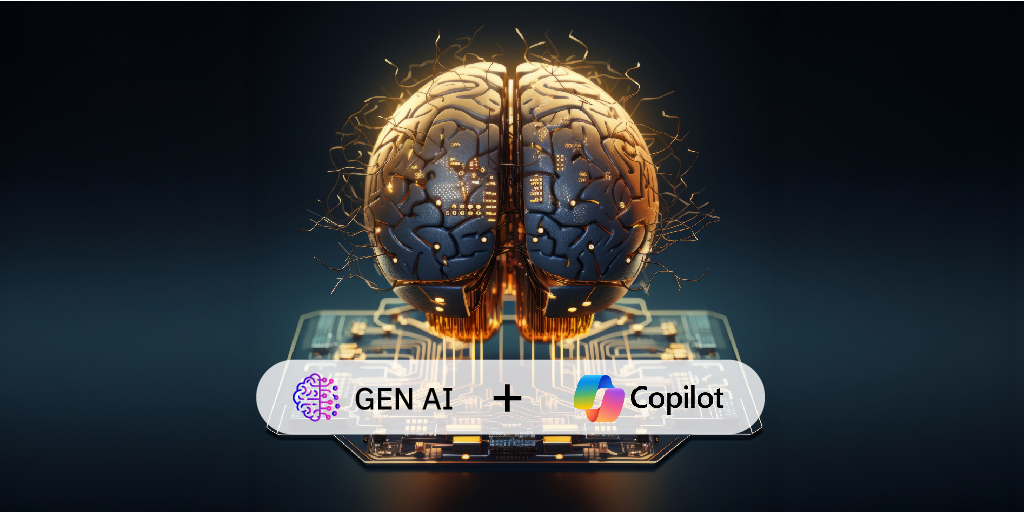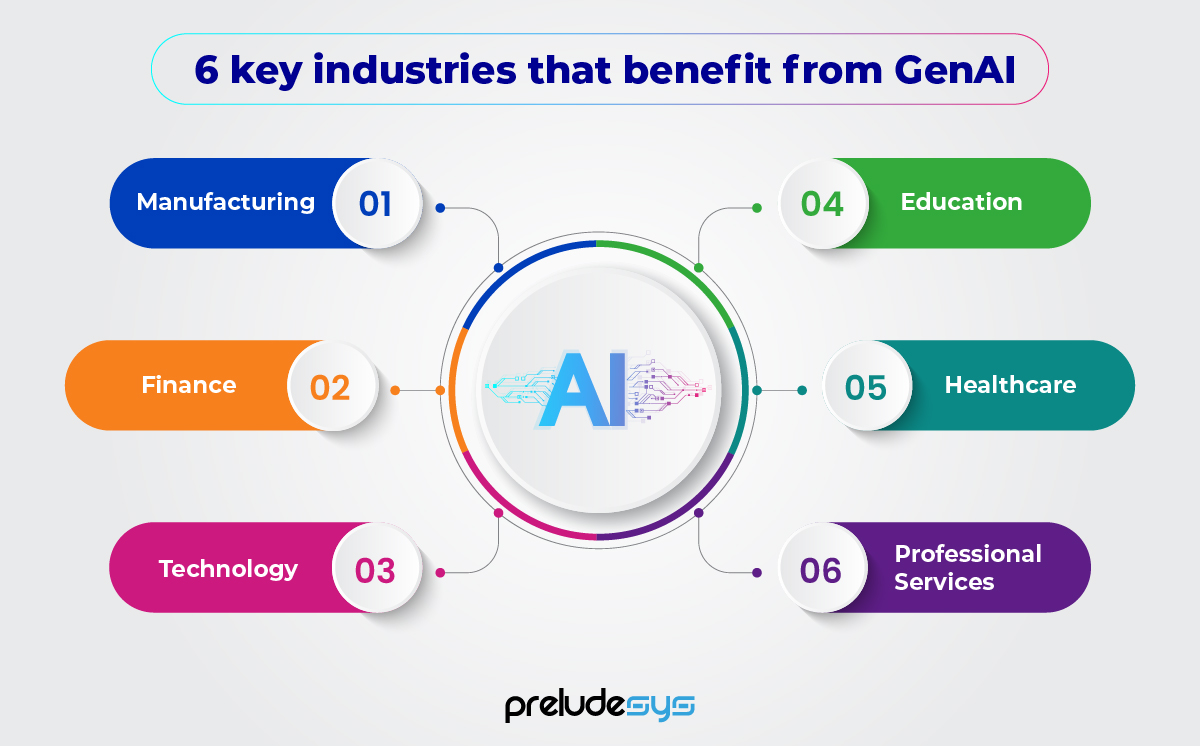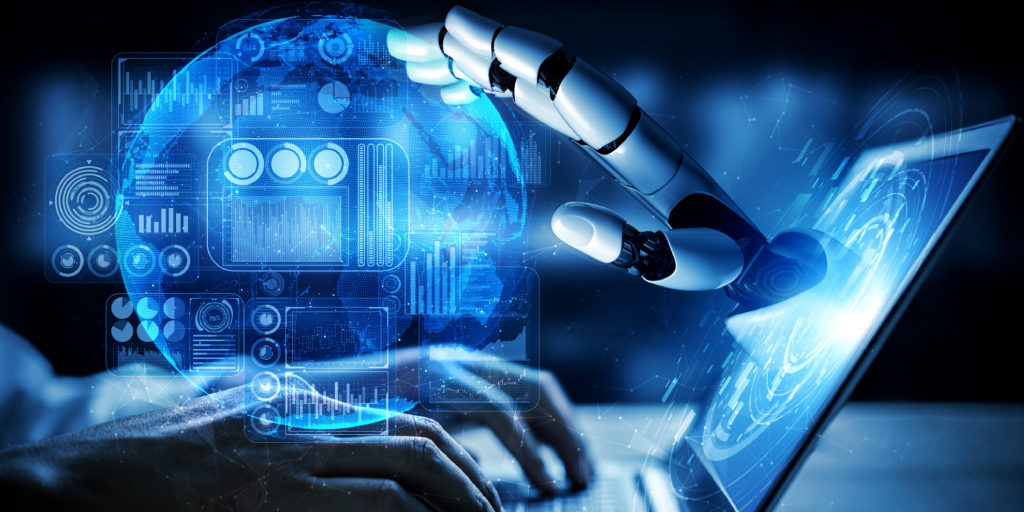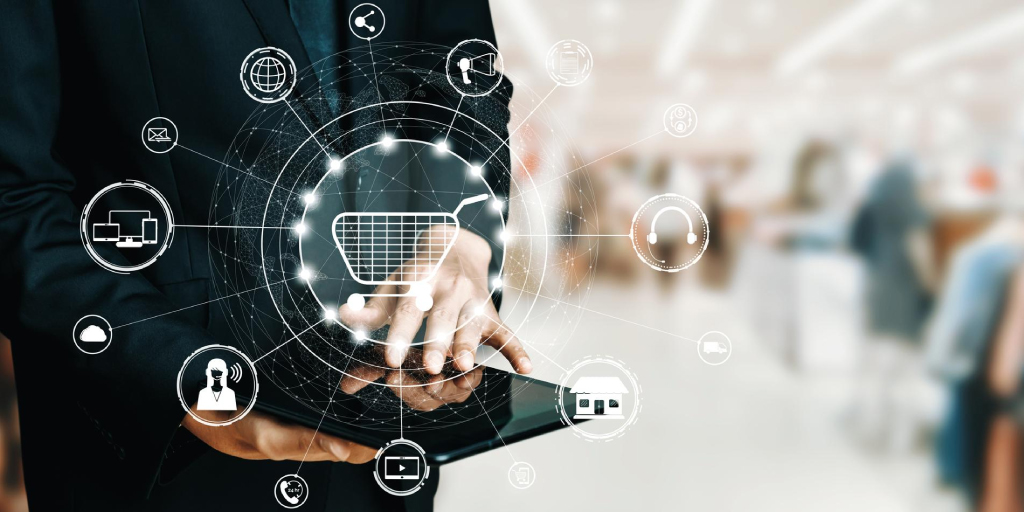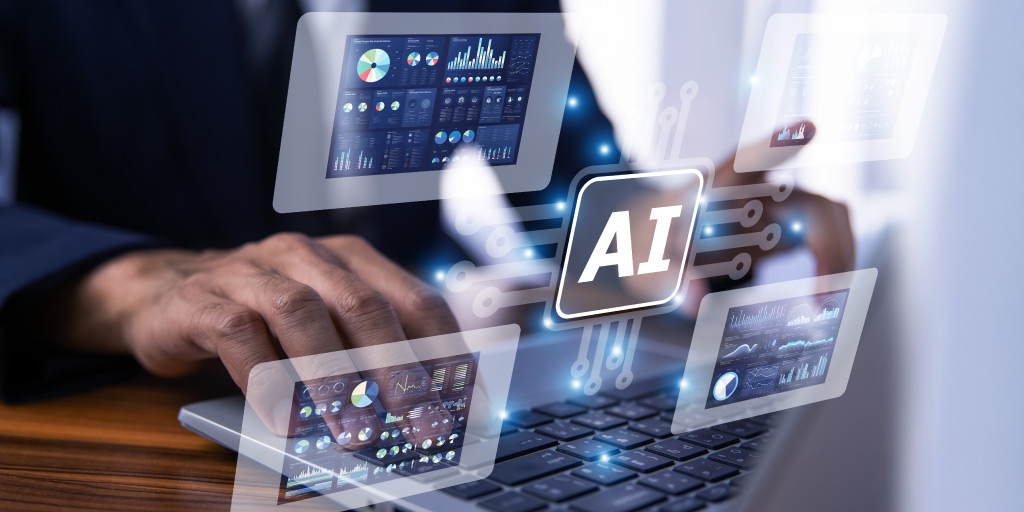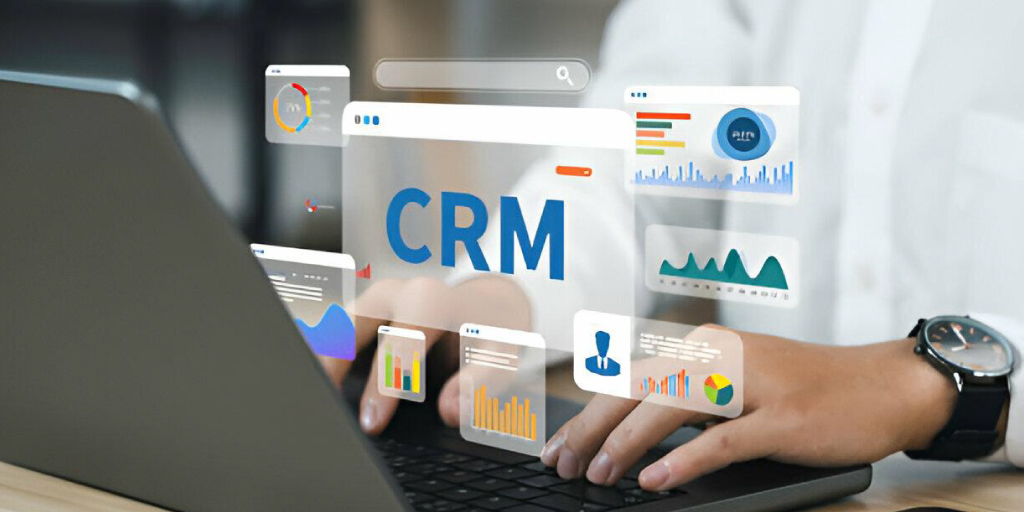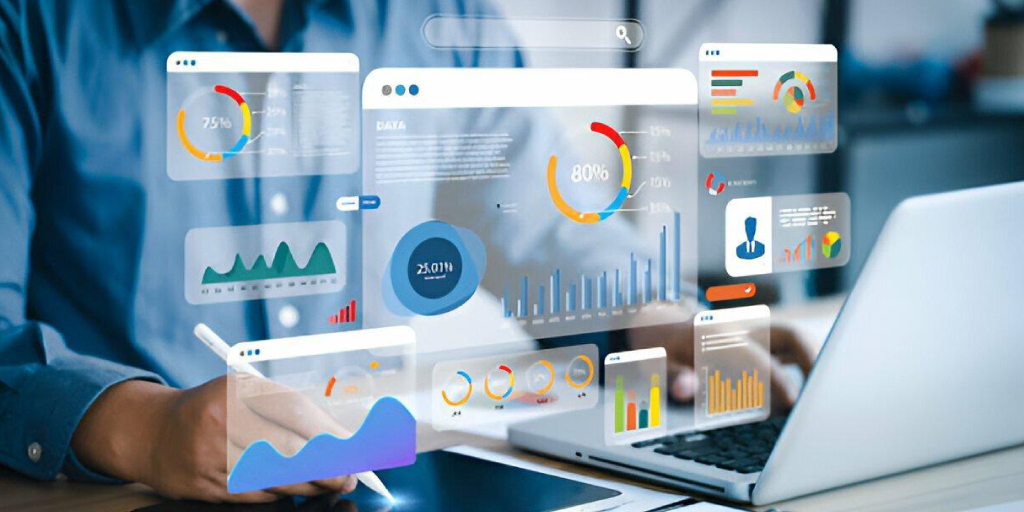We live in an era where AI is taking over most redundant operations across several industry verticals. However, AI models so far are only trained with data available from the past. But what if I tell you that you can train your AI model to analyze information and create entirely new content, such as text, images, music, or even code, based on the data it has been trained on? This is the exciting realm of Generative AI, a branch of artificial intelligence that is rapidly transforming how we interact with technology.
This blog explores the potential breakthroughs in the Gen AI space, their industrial applications, and ethical considerations. We will also examine how Gen AI and Co-pilot can completely transform the way you look at AI and take your business to the next level. By focusing on the benefits and applications, we can appreciate the transformative potential of Generative AI and Copilot and understand the importance of using these powerful tools responsibly.
Breaking Down Generative AI
In simpler terms, Gen AI can create rather than just analyze or predict. It can create new content or virtual environments based on patterns and structures learned from a training dataset. Whereas traditional AI models focus on available data fed to their algorithms, Gen AI takes it further to generate human-like text.
Several techniques are used in generative AI, and the following are notable.
- Generative Adversarial Networks (GANs): GANs consist of two neural networks—the generator and the discriminator—competing against each other in a game. The generator creates new samples, while the discriminator distinguishes between real and generated samples. Through this adversarial process, the generator improves its ability to create realistic outputs.
- Variational Auto-encoders (VAEs): VAEs are probabilistic models that learn a low-dimensional representation of data, known as the latent space. This latent space can then be sampled to generate new data points. Unlike GANs, VAEs learn a probabilistic input data distribution, enabling them to generate diverse outputs.
- Recurrent Neural Networks (RNNs) and Transformers: These models are commonly used for generating sequential data, such as text or music. RNNs process input sequences one element at a time, while transformers can simultaneously consider the entire input sequence through self-attention mechanisms.
The Six Industry Impacts and Benefits of Gen AI
Generative AI is rapidly evolving, with ongoing advancements promising to reshape various industries. It revolutionizes multiple industries by providing new tools and capabilities that enhance creativity, efficiency, and personalization. The following is a detailed look at how six major sectors benefit from Gen AI.
1. Manufacturing:
Gen AI in manufacturing can assist in design prototyping, 3D modeling, and simulations. They allow manufacturers to explore and virtually test and visualize vast design spaces. Simplification of such tasks can reduce development costs and time spent. (Tools: Azure Digital Twins)
Beyond design and prototyping, Generative AI can significantly enhance the efficiency and quality of production processes. For example, AI models can be trained on vast datasets of production line data to identify potential bottlenecks and optimize workflows in real-time, leading to increased output and reduced waste. Furthermore, Gen AI can be employed for advanced quality control, generating synthetic defect data to train inspection systems, even for rare or unseen anomalies. This proactive approach to process optimization and quality assurance can result in higher product standards and more streamlined manufacturing operations.
2. Finance:
Gen AI and Microsoft Copilot for finance can simplify financial reports, provide better market predictions, and detect fraud accurately. This empowers financial institutions and wealth managers to make informed decisions, fostering customer trust and confidentiality. (Tools: Power BI, Microsoft Defender for Cloud, Co-Pilot for finance, Microsoft Purview)
3. Technology:
AI tools like GitHub Copilot streamline development by suggesting code snippets, completing functions, and generating entire code blocks based on natural language descriptions. This not only accelerates development but also reduces errors. Additionally, AI can personalize user interfaces (UI/UX) to adapt to individual user preferences and behaviors, leading to higher user engagement and satisfaction. (Tools: Microsoft Azure Cognitive Services)
4. Education:
Gen AI in education can help to create interactive learning materials and curriculums tailored to individual learning styles and needs. It can also generate catchy content, human-like quizzes, and educational games, making learning more engaging and fostering better knowledge retention. (Tools: Minecraft Education Edition, Azure cognitive services, Power Platform). Using tools like viggle AI dance could bring one’s photo to life and make anyone groove. Such AI tools have diversified teaching methods.
Read About : Benefits of AI in the Education Industry
5. Healthcare:
Gen AI in healthcare can provide phenomenal support in medical research, diagnostic assistance, and patient care. Predictive analytics powered by AI can forecast disease outbreaks and patient outcomes, enabling healthcare providers to plan and allocate resources more effectively. It can help generate synthetic medical data to enhance research, especially in areas where real data is limited or sensitive. (Tools: Microsoft Azure Machine Learning)
6. Professional Services:
Generative AI (Gen AI) can revolutionize the professional services industry by enhancing efficiency, client experiences, and innovation. It automates routine tasks like document generation, data entry, and scheduling, freeing professionals to focus on strategic activities. AI offers personalized training and knowledge management for professional development, keeping professionals updated with the latest skills. (Tools: Microsoft Azure Machine Learning, GitHub Copilot, Azure Data Factory)
What is Copilot, and why does it matter?
Copilot is a specific application of Gen AI that has garnered significant attention, particularly in software development. It integrates seamlessly with popular development environments, providing real-time code suggestions and improvements.
Functionality and Benefits
- Code Suggestion and Completion: Copilot can suggest the next line as a developer inputs code, functioning similarly to autocomplete but tailored for coding. By reducing the time spent on boilerplate code and repetitive tasks, Copilot allows developers to focus on more complex and creative aspects of coding. Developers can easily balance the use of AI along with their manual coding practice.
- Natural Language to Code: Developers can describe their desired functionality in plain English, and Copilot translates this into the appropriate code, significantly speeding up the development process. Also, with proper code reviews and testing data from ethical sources, Copilot helps minimize common coding errors and bugs by providing accurate and tested code suggestions.
- Contextual Awareness: Understanding the context of the codebase within which it’s working, Copilot provides relevant and contextually appropriate suggestions, enhancing productivity and code quality. Ensuring the AI does not suggest code that violates licenses or intellectual property rights, Copilot also serves as an educational tool, demonstrating best practices and new coding techniques through examples.
Microsoft Copilot can also be integrated into Microsoft 365 applications designed to enhance productivity through content creation, editing, and workflow automation. It can:
- Generate and rewrite text in Word, Excel, PowerPoint, and Outlook based on user prompts.
- Summarize documents and provide concise overviews.
- Convert text into data tables.
- Provide meeting summaries, recaps, and response suggestions in Teams.
- Draft emails with varying lengths and tones in Outlook.
- Analyze data, create graphs, and identify trends in Excel.
- Create PowerPoint presentations summarizing information from Word, Excel, or user prompts.
Ethical Challenges of Generative AI
Generative AI poses several dangers, including creating realistic misinformation and deepfakes, perpetuating biases and discrimination, and violating privacy through data reconstruction. It can also lead to intellectual property theft by mimicking existing works and cause economic disruption by automating jobs in creative industries.
Generative AI can also be used for manipulation and fraud, challenging accountability and ethical standards in decision-making processes. Additionally, its substantial computational resource requirements contribute to environmental impact, and it can be exploited for sophisticated cyber-attacks and propaganda by malicious actors.
Addressing these issues requires comprehensive regulatory frameworks (like AI TRiSM), ethical guidelines, and public awareness.
Final Thoughts
Generative AI and Copilot represent significant advancements in artificial intelligence. They showcase the potential of AI to augment human creativity and productivity across various domains. These tools offer remarkable benefits, from creating content and art to revolutionizing software development.
As a Microsoft partner specializing in data and AI solutions, we constantly seek advancements that empower businesses. For any company striving towards innovation, addressing the associated ethical, security, and dependency concerns is crucial to ensure that Gen AI is used responsibly and effectively. That’s why we’re here to guide you on this exciting journey. Contact us today to explore how this powerful duo can transform your industry and empower your workforce.
